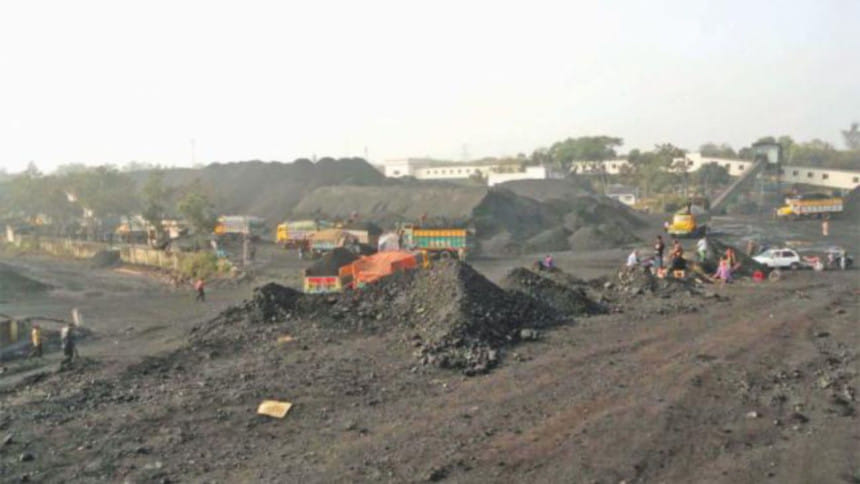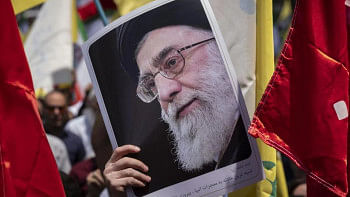Mystery of the disappearing coal

The Barapukuria coal mine debacle continues to generate considerable interest in media and not without reason. According to the lead news in a major Bangla daily published on September 3, the government has so far purchased around 10.1 million tonnes of coal from Barapukukria Coal Mining Company Limited (BCMCL). BCMCL has also managed to lose 145,000 tonnes of coal which has prompted an investigation. What ought to be pointed out here is that when we talk about coal from Barapukuria that is mined specifically for the 525-megawatt power plant, we are talking of coal of "Barapukuria grade" (high calorie, low sulphur and low ash coal). Coal is not all solid, there is also ash content. The distinction is necessary if we are to go deeper into the reasons for the loss of some of the coal due to technical/climatic reasons.
Coal experts point out that a certain percentage of the coal stored in the stockyard will be lost due to nature's elements, i.e. exposure to sunlight, wind and rain. Here rain acts as a detriment to stored coal as coal dust is washed off. Coal is also continuously combustible. Hence its temperature cannot be allowed to rise above a certain level. This requires water to be sprayed on the coal which results in further wash off. Then there is the issue of coal being stocked on open ground (in the mud in certain cases), so some of the coal actually sinks into the ground. The losses sustained due to these reasons of course are only a small part of the overall loss of 145,000 tonnes of coal.
They certainly do not explain how so much coal simply disappeared from the stockyard. The coal that is stored is transported to the power plant using conveyor belts. And this is where unfortunate things begin to happen. There is no system in place that would check if there is siphoning off of coal while it is being transported via conveyor belt. This brings us to the primary question of inventory, or stock management.
BCMCL started its commercial operation in 2005 without an inventory system in place. Over 13 years, no governmental body saw it fit to put such a system in place. Why? The probe that has been initiated should sift through historical data (if any exist) to find out how much coal has gone missing over the years. It is simply unconscionable that the country has been left in the lurch (525 MW of power not being produced daily) because energy policy planners never decided to put in measures which would keep stock of what was being produced and what was being delivered to the power plant. According to an article printed in The Financial Express on August 26, the author rightly stated that "There should have been a stock of 148,000 tonnes of coal at the 17-acre mine yard. But it was found in mid July that the mine yard has only 3,000 tonnes of coal stock. It was further reported that no inventory audit for coal production and selling was done since the Barapukuria coal mine commenced its operations back in 2005. The technical system loss, if any, was not recorded."
So, what has happened at BCMCL is that a window of opportunity was kept open for sale of coal to parties other than the power plant for obvious reasons. Take for example the brick kiln industry in Bangladesh. Estimates vary, but there are around 5,000 brick fields in operation which require coal. According to media reports, a third of BCMCL coal finds its way to private buyers, including the brick production industry. There is in fact much enthusiasm in this area as there is no inventory of coal stocks and all sales are on cash basis. Selling coal to the power plant leaves no scope for making cash since the money gets deposited in the bank.
While BCMCL gets around USD 130 per tonne for sale to PDB, open market sale per tonne of BCMCL coal is around USD 192. That is a substantial price difference! There is a horde of small buyers of coal who purchase anywhere between 5 to 10 tonnes of coal. As stated before, in the absence of any inventory management practice at the mine, what is there to stop individuals from throwing in an extra tonne here or there in exchange for some monetary benefit? Who is going to check the discrepancy between sold amount on paper and sold amount in reality?
What it all boils down to is that unless we put into practice inventory management systems, there will be no end to scandals involving coal mines like Barapukuria. The whole system is geared towards siphoning off our sweet coal. Given the stupendous amounts of money up for grabs from unauthorised sales, it will take a political decision from the top to initiate good management practices. We hope that in the national interest, this will be done without any further ado. It will certainly help the national exchequer a lot of headache, i.e. coughing up the money to import 100,000 tonnes of coal that is supposed to arrive by December. If we are really sincere about producing electricity from coal at a reasonable price, then it has to be produced from domestic coal, not imported.
Syed Mansur Hashim is Assistant Editor, The Daily Star.





Comments